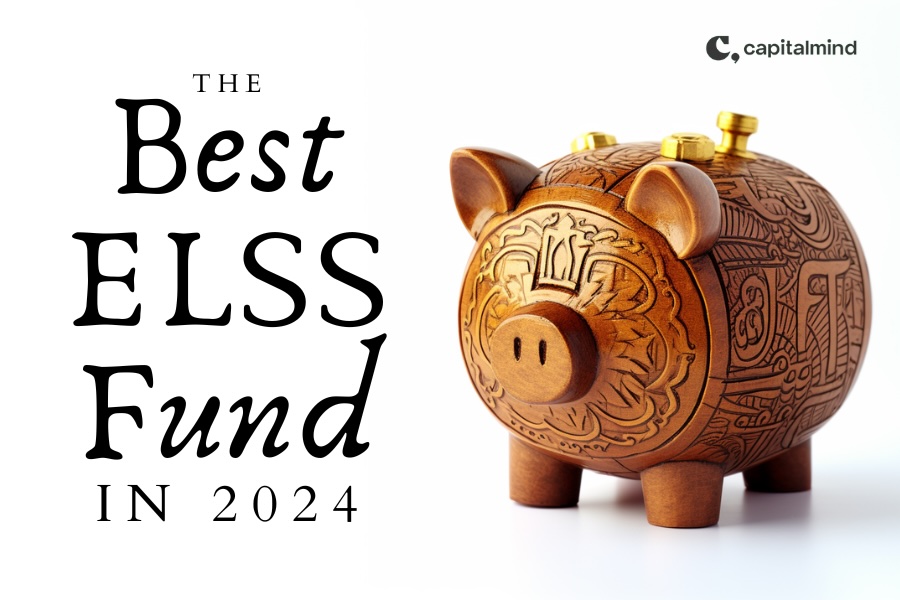ITI Mutual Fund has launched an NFO (New Fund Offering) for an active equity fund called the ITI Value Fund. The NFO is open from 25th May to 8th June 2021. We took a look to see if it makes sense for investors.
Short Answer: How long would it take to be convinced that a fund has superior stock-picking skills? One year? Five years? Ten? ITI Value Fund says all the right things about picking underpriced stocks. A few too many things in fact. The problem is so does every discretionary equity fund. When you peel the onion, its hard to find any real points of difference between two active discretionary funds of the same AMC except for the label. We’d pass on the ITI Value Fund.
Read on for our detailed take on the ITI Value Fund NFO.
ITI Value Fund in a nutshell
The investment objective of the ITI Value Fund from the Scheme Information Document filed with SEBI:
“The investment objective of the scheme is to seek to generate long term capital appreciation by investing substantially in a portfolio of equity and equity related instruments by following value investing strategy.”
The ITI Value Fund investment strategy from the Scheme Information Document:
“What are the investment strategies?
The Scheme aims to provide long term capital growth by investing in a diversified portfolio of companies that are selected using attributes of value investing. The Scheme would seek to identify undervalued securities having the potential to deliver superior risk adjusted returns over the long term and will follow a value-based approach towards investing.
Undervalued stocks would include stocks which the Fund Managers believe are trading at less than their assessed intrinsic values. The identification of undervalued stocks would involve fundamental analysis. It will be based on the evaluation of various factors including but not limited to stock valuation, financial strength, cash flows, company’s competitive advantage, business prospects and earnings potential. This may also constitute stocks, which have depreciated for a short period due to some exceptional circumstance or due to market correction phase or due to lack of interest in investing in a sector, which has significantly underperformed the market. Such stocks are considered to have intrinsic value because of their business models and show potential for smart growth in the future. The Scheme may also seek participation in other equity and equity related securities to achieve optimal portfolio construction.
The portfolio will be built utilising a bottom-up stock selection process, focusing on appreciation potential of individual stocks from a fundamental perspective.
Everything but the kitchen sink
In addition to the investment strategy outlined in their document submitted to SEBI, the ITI Value Fund marketing presentation details a process that combines “top-down macro-driven” sectoral allocations, “bottom-up price-value gap” driven stock selections, mentions “low P/E“, “low P/B” on a slide titled “Product Advantages”, but then also says on a slide all of its own “Investment style is Growth at a Reasonable Price (GARP)” in case we were more familiar with the acronym than its expansion. But before that slide it introduces the “SQL Equity Investment Philosophy”: Margin of Safety, Quality of the Business, Low Leverage.
It further makes its case with six case studies: Nestle (Maggi recall 2016), IPCA labs (USFDA issues 2018), Infosys (Vishal Sikka resignation 2017), Pharma Sector as a whole (2015 to 2019), Building Materials (tile manufacturers in 2010), and Mid and Smallcap IT (2016). The implied message being had this fund been around, it would have picked these stocks.
Phew! Can we take a step back please?
First, a question
Is value investing a means, or is it an end? And what’s the difference?
Bear with me here.
The “means” value-investing camp believes value investing is a formula for picking superior stocks, a formula that relies on historical measures like earnings, book value, free-cash flow etc. Even a common-sense Discounted Cash Flow (DCF) exercise has to look back and apply similar assumptions to look forward.
If the “means” camp were to have a lifetime chair, it would be Benjamin Graham.
The “ends” value-investing camp believes value investing is not about a rigid set of formulae but about identifying “mispriced” businesses. The alleged mis-pricing could be a turnaround in a debt-laden company near bankruptcy, de-merger of a profitable business, or a hyper-growth story. Therefore, it is value investing if the prevailing consensus underestimates how much a company is worth by a significant margin, irrespective of if that stock currently trades at 7.5x or 75x Price-Earnings.
What school of value investing do you subscribe to? This is not even a fair question.
Charlie Munger’s greatest gift to Fund Managers
The figurehead for the “ends” value investing camp would of course be Charlie Munger, the person most-quoted in the marketing presentation.
For instance, “I think all good investing is Value Investing. It’s just that some people look for value in strong companies and some look for value in weak companies. Every value investor tries to get more value than he pays for.” – Charlie Munger
Read that first line again. Slowly this time:
“All. good investing. is Value investing.”
That’s like a Royal Challengers Bangalore or Arsenal fan saying: “Any team that wins the cup, becomes an RCB / Arsenal team.”
Of course, that’s because the unsaid subtext in Charlie’s quote: “Given the right set of skills, you might end up spotting value pretty much anywhere.” Not like he doesn’t have a track record spanning decades to show for it.
But for Fund Managers and their marketing departments everywhere, Munger’s quote translates to: “We can justify literally any stock in a value portfolio.”
In the SEBI-mandated Scheme Information Document, there is a mandatory section called “Comparison with existing open-ended equity schemes”. The objective is for the AMC to show how the new fund is different from existing funds. Usually they make for interesting reading as you can see the author’s word-play, trying to convince readers of the difference between one active bottom-up fundamental fund from another active bottom-up fundamental fund. In the case of ITI Value Fund, you can tell, no-one stayed up late filling in this section. Check out the underlined sections.

Source: ITI Value Fund SID
A barrage of frameworks, proprietary “SQL methodologies” and the differentiation column says the “difference” between the new value fund and their existing Multi-cap fund is not even a difference! It’s not like they could say “Unlike this fund, the new fund will stay away from crappy overvalued stocks.”
Not this value fund but ALL value active discretionary funds
This is not about singling out the ITI Value Fund. That tired “top-down / bottom-up / GARP / Munger quotes” routine is the staple of almost every active discretionary equity fund pitch. Just look through some past NFOs.
You could argue, just because everyone says it doesn’t mean some aren’t doing a great job picking stocks. Without even checking you can be sure that some of those funds have fantastic returns over the last 18 months. But what does that tell you?
A personal anecdote: In August 2019, I started accumulating a stock as a “contrarian deep value” opportunity. I mean seriously contrarian. By November 2019, it was my largest individual allocation. Uncomfortably so. I’d decided to give it up to five years when I bought it, so did not sell when the March 2020 crash came around. Fast-forward to 2021, and that stock was the talk of the town. Thinking back, there are a few such assorted examples.
Woah, that’s a weird not-so-subtle way to brag. No it’s not. The point is I have not convinced even myself that I didn’t just get lucky with a few discretionary picks in very specific market conditions. I’d have to do this repeatedly over a long time (decades) to win my own business.
Nick Magiulli said this brilliantly in his post on ofdollarsanddata.com “Why you shouldn’t pick individual stocks“
…Any competent basketball coach could tell you whether someone was skilled at shooting within the course of 10 minutes. Yes, it’s possible to get lucky and make a bunch of shots early on, but eventually they will trend toward their actual shooting percentage. The same is true in a technical field like computer programming. Within a short period of time, a good programmer would be able to tell if someone doesn’t know what they are talking about.
But, what about stock picking? How long would it take to determine if someone is a good stock picker?
An hour? A week? A year?
Try multiple years, and even then you still may not know for sure. The issue is that causality is harder to determine with stock picking than with other domains. When you shoot a basketball or write a computer program, the result comes immediately after the action. The ball goes in the hoop or it doesn’t. The program runs correctly or it doesn’t. But, with stock picking, you make a decision now and have to wait for it to pay off. The feedback loop can take years.
There are no backtests for discretionary value strategies. The folks running the ITI Value Fund might well be some of the best around, and given some luck to go with their skill, they might deliver good or maybe even spectacular returns.
But there is just no way to arrive at that prediction on the basis of the overdose of value investing buzzwords in their marketing.
Should you invest in the ITI Value Fund
Quoting from our review of another Value Fund that launched last year: DSP Value Fund Review
Value / Contra funds as a category have underperformed the market. The best-performing contrarian fund in this category holds HDFC Bank, ICICI Bank in its top holdings. Calling that a contrarian strategy is like a Delhi NCR tourism ad in November that says “Come for the fresh air”.
First, let’s call Value and Contra Funds what most really are. A different label on another active equity mutual fund.
Unless you have extra confidence in the team picking the stocks, and clear differentiation from their Multi-Cap fund, you should wait for a semblance of a track record to invest. Or better yet, don’t rely on idiosyncratic, hard to identify fund manager capabilities. Consider quantitative factor strategies where rigorous (and by no means flawless) backtests can atleast serve as an approximation of the past.
Note: We run active portfolios of our own in Capitalmind Premium and Capitalmind Wealth (our PMS), so please assume we are biased.
For immediate access to Capitalmind Portfolios, upgrade to Capitalmind Premium. Model Portfolios, Premium Research, and a vibrant member community.
For any questions, tweet / DM us on twitter or email us at premium [at] capitalmind [dot] in.





